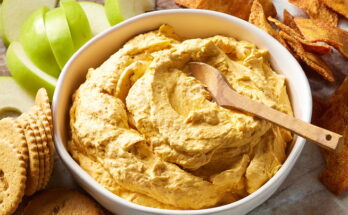Turkey Meatballs Recipe: Turkey meatballs are a versatile, healthy, and flavorful dish that can fit into a variety of meals. Whether you’re serving them as appetizers, adding them to pasta, or pairing them with a fresh salad, turkey meatballs are sure to be a hit.
But why choose turkey over beef or pork? Turkey is leaner, lower in fat, and packed with protein, making it a fantastic option for those looking to maintain a balanced diet without sacrificing flavor. Plus, it’s incredibly easy to work with and adapts well to different spices and herbs.
In this step-by-step guide, you’ll learn how to make perfect turkey meatballs from scratch, explore different cooking methods, and discover tips to customize flavors to suit your taste.
Ingredients for Turkey Meatballs
Basic Ingredients List
To create delicious turkey meatballs, you’ll need the following ingredients:
- Ground Turkey (1 lb) – Lean but juicy meat for the base.
- Breadcrumbs (½ cup) – Adds texture and binds the ingredients.
- Egg (1 large) – Acts as a binder to hold the meatballs together.
- Garlic (2 cloves, minced) – Enhances flavor with aromatic notes.
- Onion (1 small, finely chopped) – Provides moisture and sweetness.
- Parmesan Cheese (¼ cup, grated) – Adds richness and umami flavor.
- Fresh Parsley (2 tbsp, chopped) – Brings freshness and color.
- Salt (1 tsp) – Essential seasoning.
- Black Pepper (½ tsp) – Adds a subtle heat.
- Olive Oil (1 tbsp) – For cooking.
Optional Ingredients for Enhanced Flavor
- Red Pepper Flakes (¼ tsp) – For a spicy kick.
- Italian Seasoning (1 tsp) – Adds herbaceous flavor.
- Lemon Zest (½ tsp) – Provides a bright, citrusy touch.
- Worcestershire Sauce (1 tsp) – Deepens the flavor.
Having these ingredients ready ensures you’re prepared for each step of the recipe without interruptions.
Essential Kitchen Tools and Equipment
Tools Needed for Preparation
- Mixing Bowls – For combining ingredients.
- Measuring Cups and Spoons – Ensures accurate measurements.
- Baking Sheet or Skillet – Depending on the cooking method.
- Parchment Paper – Prevents sticking during baking.
- Meat Thermometer – Ensures meatballs are fully cooked.
Substitutes for Specialized Equipment
- Food Processor – If you don’t have one, finely chop onions and garlic by hand.
- Ice Cream Scoop – Use for shaping even-sized meatballs. Alternatively, a spoon works well too.
Having the right tools makes preparation smoother and helps achieve consistent results every time.
How to Make Turkey Meatballs – Step by Step Guide
Step 1: Preparing the Ingredients
Preparation is the key to cooking success. Start by gathering and measuring all the ingredients. Lay them out on your countertop to streamline the process.
Measuring and Organizing Ingredients
- Finely chop onions and garlic to ensure they mix evenly with the meat.
- Grate the Parmesan cheese and chop the parsley ahead of time.
- Crack the egg into a separate bowl to avoid shell fragments in the mixture.
Tips for Prepping Ingredients Efficiently
- Use a garlic press to save time on mincing garlic.
- If using fresh breadcrumbs, blend day-old bread in a food processor for a quick fix.
- Preheat your oven to 400°F (200°C) if you’re baking the meatballs.
Proper preparation not only saves time but also ensures that the cooking process flows seamlessly.
Step 2: Mixing the Ingredients
In this step, you’ll combine all the ingredients to form the meatball mixture.
Combining Wet and Dry Ingredients
- Start by adding the ground turkey to a large mixing bowl.
- Add breadcrumbs, minced garlic, chopped onion, Parmesan cheese, parsley, salt, and pepper.
- Lightly beat the egg in a separate bowl and pour it into the mixture.
Ensuring Proper Consistency
- Mix gently with your hands or a spoon until all ingredients are just combined. Avoid overmixing, as it can make the meatballs dense and tough.
- If the mixture feels too wet, add a tablespoon of breadcrumbs. If it feels too dry, add a splash of milk or water.
This step lays the foundation for soft and flavorful meatballs, so take your time to get the consistency just right.
Step 3: Shaping the Meatballs
Once the mixture is ready, it’s time to form the meatballs.
Tips for Uniform Sizing
- Use a tablespoon or small scoop to portion the meatballs evenly.
- Roll each portion gently between your palms to create smooth balls.
Preventing Sticking While Rolling
- Lightly oil your hands to prevent the mixture from sticking.
- Place the formed meatballs on a parchment-lined baking sheet to avoid sticking during baking.
Uniform meatballs cook evenly and look visually appealing when served.
Step 4: Cooking Methods for Turkey Meatballs
Turkey meatballs can be cooked using various methods depending on your preference and available equipment. Let’s explore the three most popular methods—baking, pan-frying, and air-frying.
Baking Method
Baking is a healthier and hands-free option, perfect for cooking a large batch of meatballs.
- Preheat the Oven – Set your oven to 400°F (200°C) and line a baking sheet with parchment paper or lightly grease it with cooking spray.
- Arrange Meatballs – Place the shaped meatballs evenly on the baking sheet, ensuring they are not touching.
- Bake to Perfection – Cook for 15–20 minutes, flipping them halfway through for even browning.
- Check for Doneness – Use a meat thermometer to ensure the internal temperature reaches 165°F (74°C).
Pro Tip: For extra browning, broil the meatballs for an additional 2–3 minutes at the end of baking.
Pan-Frying Method
If you prefer a crispy exterior, pan-frying is the way to go.
- Heat Oil – Add 1–2 tablespoons of olive oil to a large skillet over medium heat.
- Cook in Batches – Place meatballs in the pan without overcrowding.
- Brown Evenly – Sear each side for 2–3 minutes until golden brown.
- Simmer in Sauce – Transfer the browned meatballs to a simmering sauce (like marinara) and cook for another 10–12 minutes to finish cooking through.
Pro Tip: Use a non-stick skillet to prevent sticking and ensure easy flipping.
Air-Frying Method
For a quicker, healthier option, try using an air fryer.
- Preheat the Air Fryer – Set it to 375°F (190°C).
- Arrange Meatballs – Place them in a single layer in the air fryer basket.
- Cook in Batches – Air fry for 10–12 minutes, shaking the basket halfway through.
- Check Internal Temperature – Ensure they reach 165°F (74°C) before serving.
Pro Tip: Lightly spray the meatballs with oil for a crispier texture.
Step 5: Testing for Doneness
No one wants undercooked or dry meatballs, so checking for doneness is critical.
Internal Temperature Guidelines
- Always aim for a safe internal temperature of 165°F (74°C).
- Use a digital meat thermometer to avoid guesswork. Insert it into the center of a meatball without touching the pan or tray.
Visual and Texture Indicators
- Color – Fully cooked turkey meatballs should be light brown with no pink centers.
- Texture – They should feel firm but still slightly springy to the touch.
- Juiciness – Cut one open to ensure it’s moist, not dry.
Testing guarantees perfectly cooked, juicy meatballs every time.
Step 6: Serving Suggestions
Now that your turkey meatballs are cooked, it’s time to serve them up in style!
Side Dishes and Sauces
- Classic Spaghetti and Marinara Sauce – A timeless pairing.
- Mashed Potatoes and Gravy – For a comforting meal.
- Zoodles or Cauliflower Rice – Low-carb options for health-conscious eaters.
- Cucumber Salad or Roasted Vegetables – Adds a fresh, crunchy side.
Presentation Ideas
- Serve on a platter with toothpicks for appetizers.
- Arrange over creamy polenta or risotto for a gourmet twist.
- Add to sub rolls with melted mozzarella for hearty meatball sandwiches.
Pro Tip: Garnish with extra Parmesan, chopped parsley, or red pepper flakes for an elegant finish.
Storing and Reheating Turkey Meatballs
Proper storage ensures you can enjoy your meatballs later without compromising flavor.
Refrigeration Guidelines
- Store cooked meatballs in an airtight container in the refrigerator for up to 4 days.
- Keep leftover sauce separate to maintain texture.
Freezing and Reheating Tips
- Freezing – Place cooled meatballs on a baking sheet and freeze individually before transferring them to a freezer bag. They’ll last up to 3 months.
- Reheating – Warm frozen meatballs in the oven at 350°F (175°C) for 15–20 minutes or microwave in 30-second intervals.
Pro Tip: Always thaw frozen meatballs in the fridge overnight before reheating for best results.
Nutritional Benefits of Turkey Meatballs
Turkey meatballs aren’t just delicious—they’re also packed with nutrients.
Low-Fat and High-Protein Content
- Lean Protein – Turkey is an excellent source of protein, aiding muscle growth and repair.
- Low Saturated Fat – Great for heart health compared to beef or pork.
Nutritional Breakdown per Serving (4 Meatballs)
| Nutrient | Amount |
|---|---|
| Calories | 200–250 kcal |
| Protein | 25–30 g |
| Fat | 10–12 g |
| Carbohydrates | 5–10 g |
| Fiber | 1–2 g |
Pro Tip: Add spinach or zucchini to the mixture for extra vitamins and minerals.
Common Mistakes and How to Avoid Them
Even experienced cooks can run into trouble with meatballs. Here’s how to avoid common pitfalls:
- Overmixing the Ingredients – Stir just until combined to keep meatballs tender.
- Skipping the Binder – Always include breadcrumbs and egg to prevent falling apart.
- Cooking Too Quickly – Slow, even cooking helps retain moisture.
- Overcrowding the Pan – Cook in batches to ensure even browning.
- Neglecting Seasoning – Taste the mixture before cooking by frying a small patty.
Pro Tip: Keep a bowl of water nearby to moisten your hands while shaping meatballs for smoother rolling.
Flavor Variations and Customizations
One of the best things about turkey meatballs is their versatility. With a few tweaks, you can customize them to match different cuisines and flavor profiles.
Mediterranean Style
For a bright and herby flavor, try this Mediterranean-inspired variation:
- Additions:
- Feta Cheese (¼ cup, crumbled) – Adds a creamy, tangy flavor.
- Fresh Dill or Oregano (1 tbsp, chopped) – Enhances herbal notes.
- Lemon Zest (1 tsp) – Provides a refreshing citrus punch.
- Serving Suggestions:
- Pair with hummus, tzatziki sauce, or a Greek salad for a light and satisfying meal.
Spicy Asian-Inspired Flavor
For a bold, spicy twist, add an Asian flair to your turkey meatballs:
- Additions:
- Soy Sauce (1 tbsp) – Adds umami depth.
- Ginger (1 tsp, grated) – Provides warmth and spice.
- Sriracha (1 tsp) – Gives a subtle heat.
- Green Onions (2 tbsp, finely chopped) – Adds freshness.
- Serving Suggestions:
- Serve with jasmine rice, stir-fried veggies, or teriyaki glaze for an Asian-inspired dish.
Italian Style
For classic Italian meatballs, keep it simple and flavorful:
- Additions:
- Mozzarella Cheese (½ cup, shredded) – Adds richness.
- Basil (2 tbsp, chopped) – Gives a fresh, aromatic touch.
- Red Pepper Flakes (¼ tsp) – Adds mild heat.
- Serving Suggestions:
- Serve over spaghetti with marinara sauce or in a sub sandwich topped with melted cheese.
Meal Prep Ideas with Turkey Meatballs
Turkey meatballs aren’t just for dinner—they’re meal-prep friendly and can be used in a variety of dishes throughout the week.
Salads and Wraps
- Toss meatballs into a Greek salad with cucumbers, tomatoes, and olives.
- Use them as a protein-packed filling for wraps with hummus and spinach.
Pasta and Rice Bowls
- Serve meatballs over whole-grain pasta or quinoa for a balanced meal.
- Add them to rice bowls with roasted vegetables and tahini dressing.
Soups and Stews
- Incorporate meatballs into Italian wedding soup or a vegetable-packed broth.
- Use them in hearty stews for added protein.
Snack or Appetizer Options
- Serve bite-sized meatballs on toothpicks with dipping sauces for party appetizers.
- Make mini sliders with meatballs and cheese for a fun snack idea.
FAQs about Turkey Meatballs Recipe
1. What ingredients are needed for turkey meatballs?
To make turkey meatballs, you typically need ground turkey, breadcrumbs, an egg, minced garlic, grated onion, and seasonings like salt, pepper, and Italian seasoning. You can also add grated Parmesan cheese for extra flavor.
2. How do I ensure my turkey meatballs don’t fall apart?
To prevent turkey meatballs from falling apart, make sure you use enough binding agents like eggs and breadcrumbs. Also, avoid overmixing the meat mixture, as it can make the meatballs tough.
3. Can turkey meatballs be made gluten-free?
Yes, to make gluten-free turkey meatballs, substitute traditional breadcrumbs with a gluten-free alternative such as almond flour or gluten-free breadcrumbs.
4. Are turkey meatballs healthier than beef meatballs?
Turkey meatballs can be healthier than beef meatballs because ground turkey generally contains less fat, especially if you choose lean ground turkey. However, the overall nutritional content will also depend on the other ingredients used.
5. How long should I cook turkey meatballs?
Turkey meatballs should be cooked until they reach an internal temperature of 165°F (74°C). This usually takes about 20-25 minutes in an oven set at 375°F (190°C).
6. Can I freeze cooked turkey meatballs?
Yes, cooked turkey meatballs freeze well. Allow them to cool completely before freezing them in an airtight container. They can be stored in the freezer for up to 3-4 months.
7. What are some serving suggestions for turkey meatballs?
Turkey meatballs can be served in a variety of ways. They’re great in marinara sauce over spaghetti, as a protein addition to a salad, in a meatball sandwich, or simply with a side of steamed vegetables for a low-carb option.
Conclusion
Turkey meatballs are a delicious, versatile, and healthy option that can suit any occasion—from family dinners to meal prepping for the week. With simple ingredients, easy steps, and multiple cooking methods, you can whip up a batch of flavorful meatballs in no time.
Whether you prefer them baked, pan-fried, or air-fried, these meatballs are guaranteed to impress. Don’t forget to experiment with flavors and serving styles to keep your meals exciting. Now, it’s time to head to the kitchen and make these irresistible turkey meatballs!



